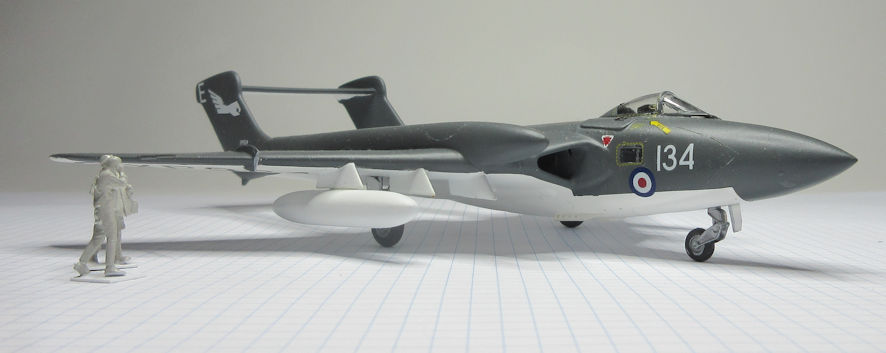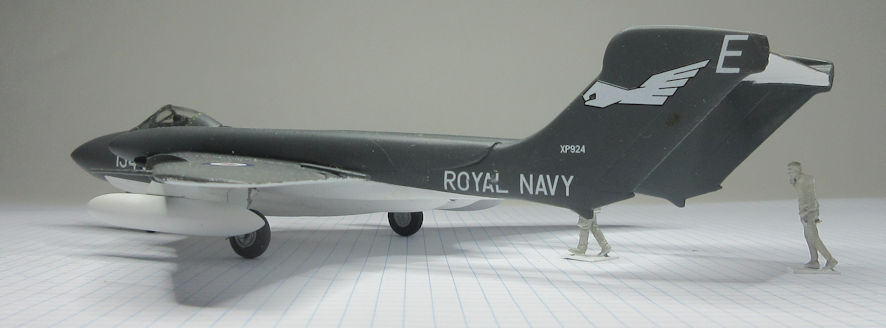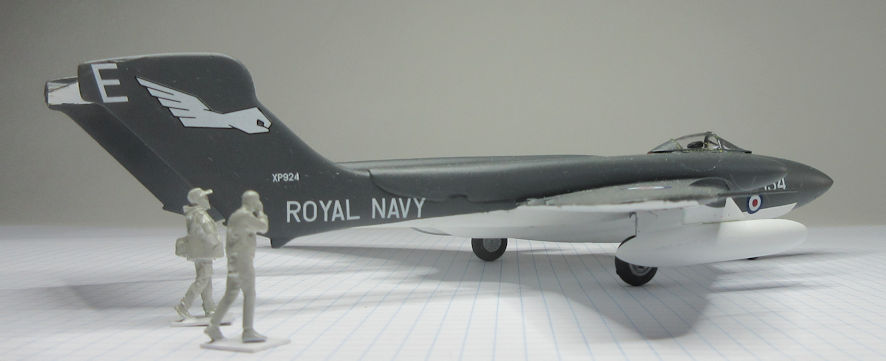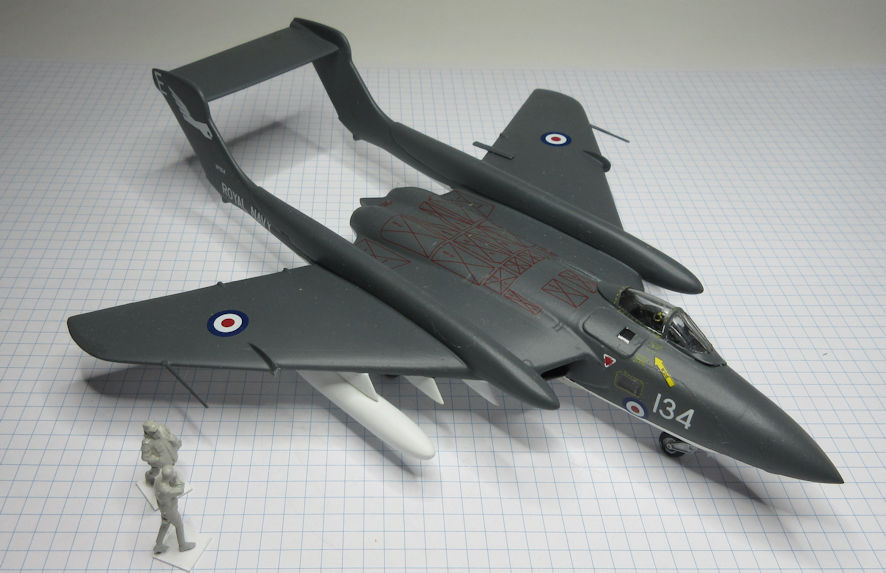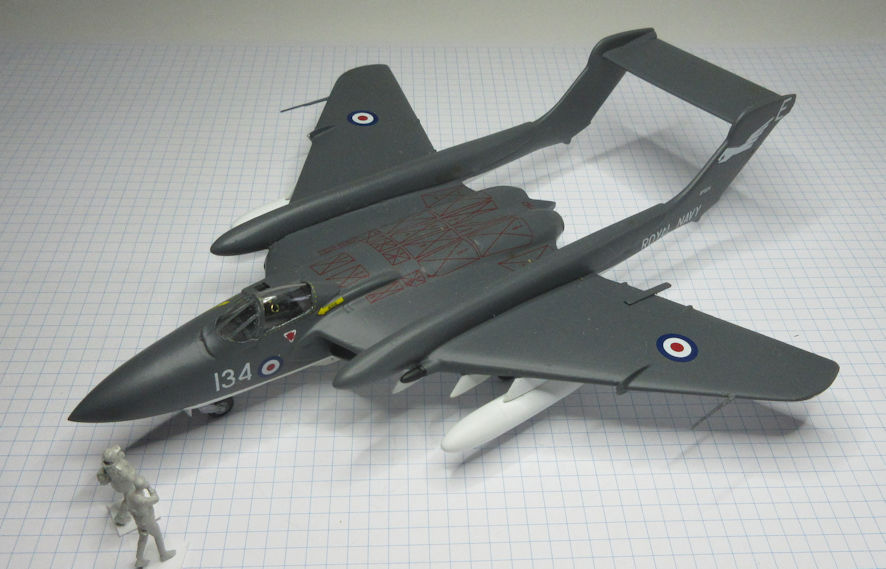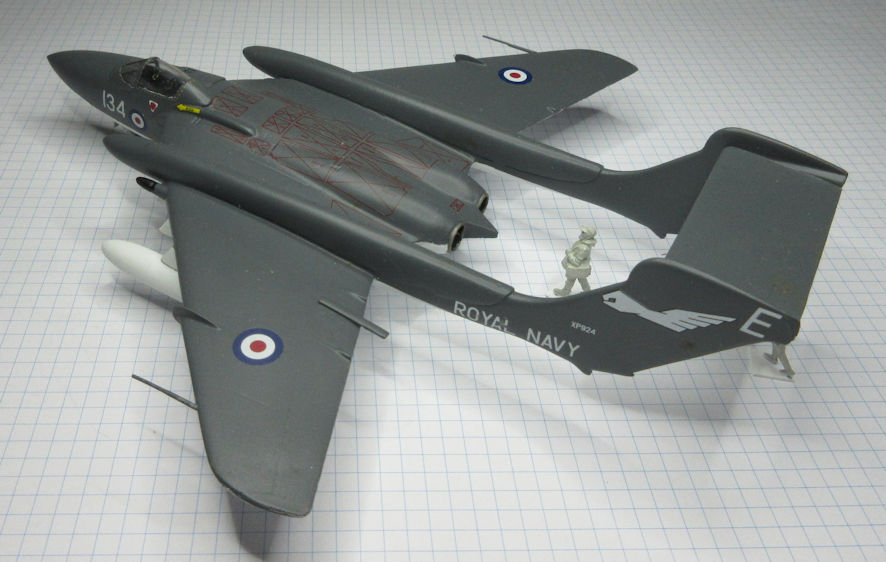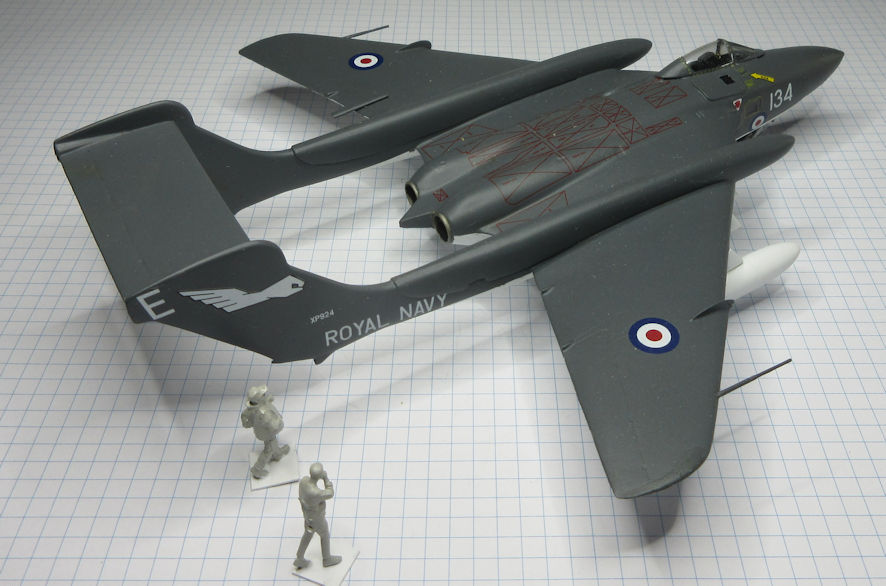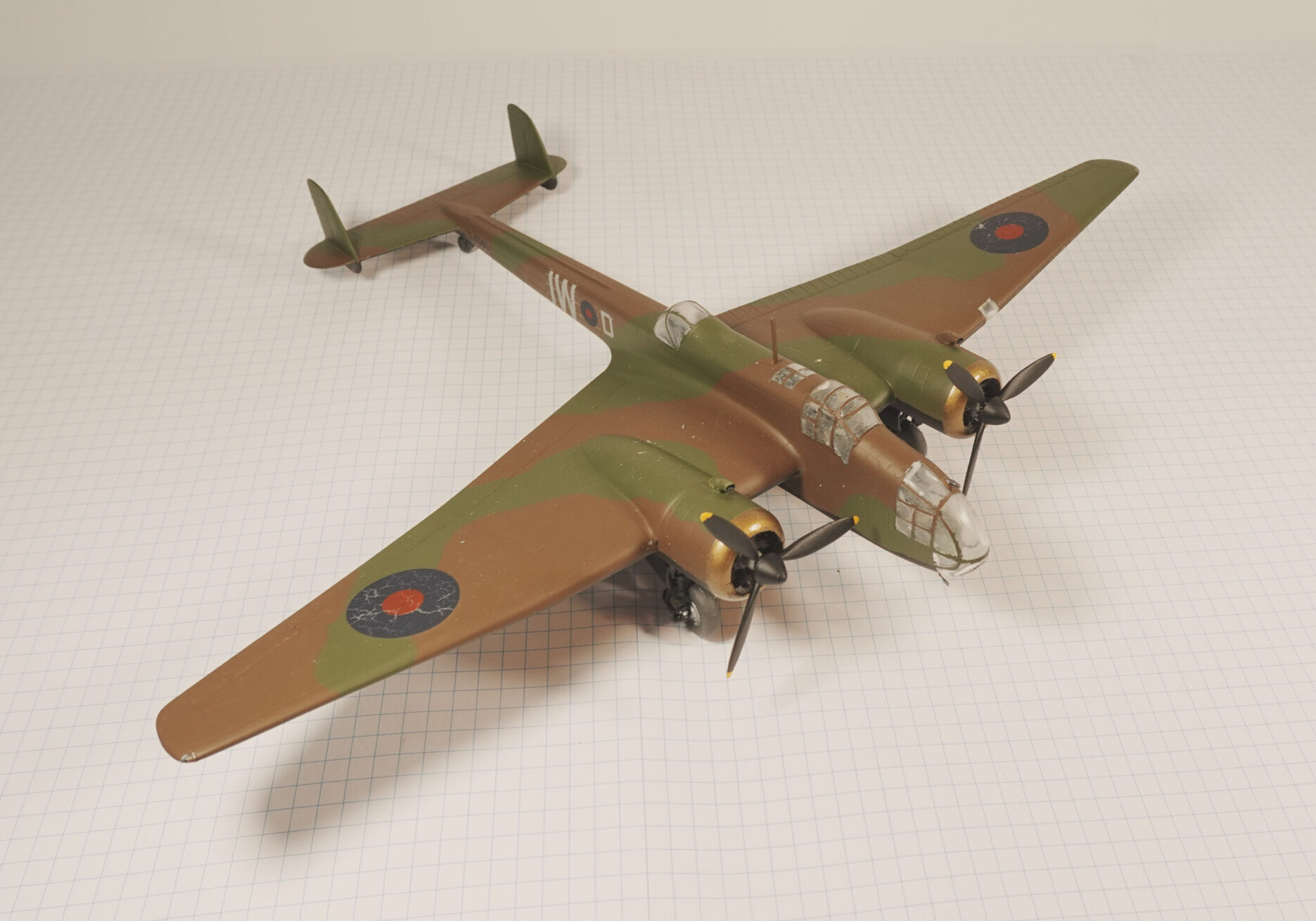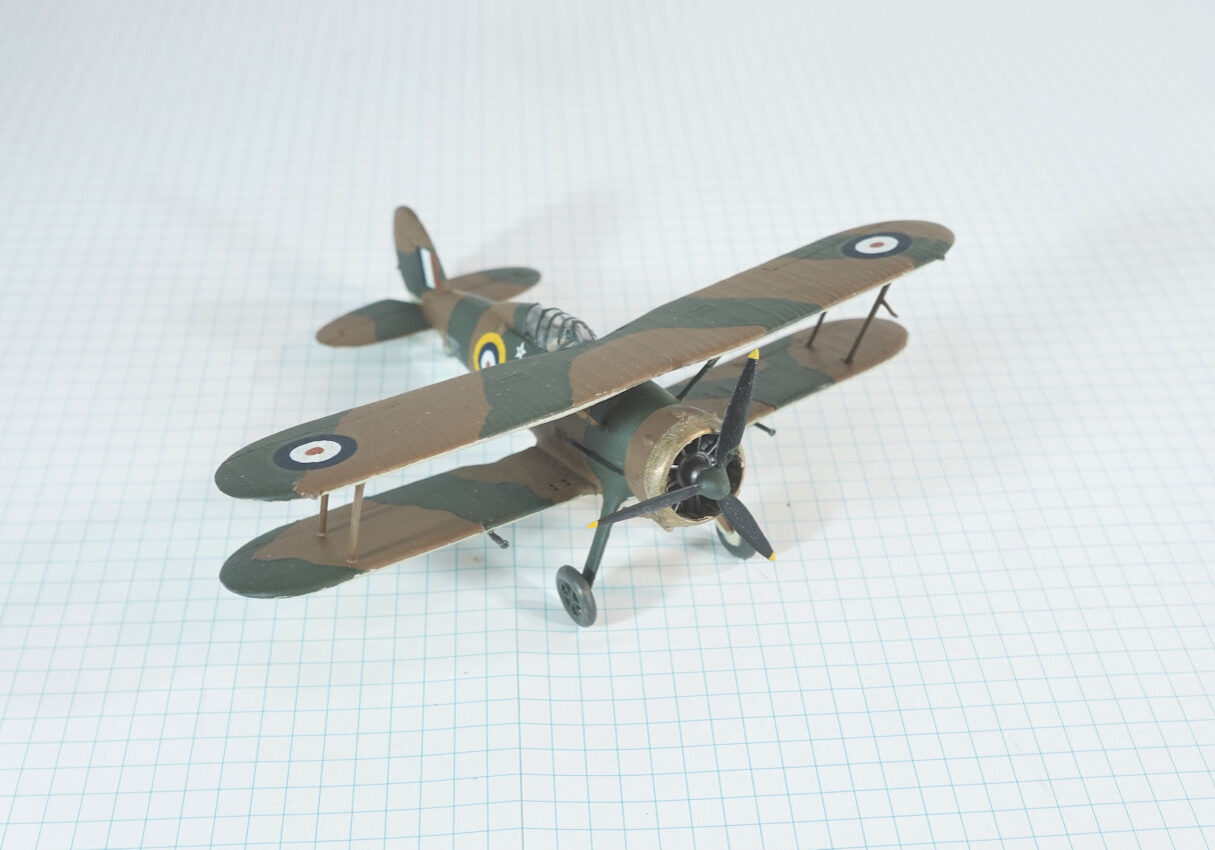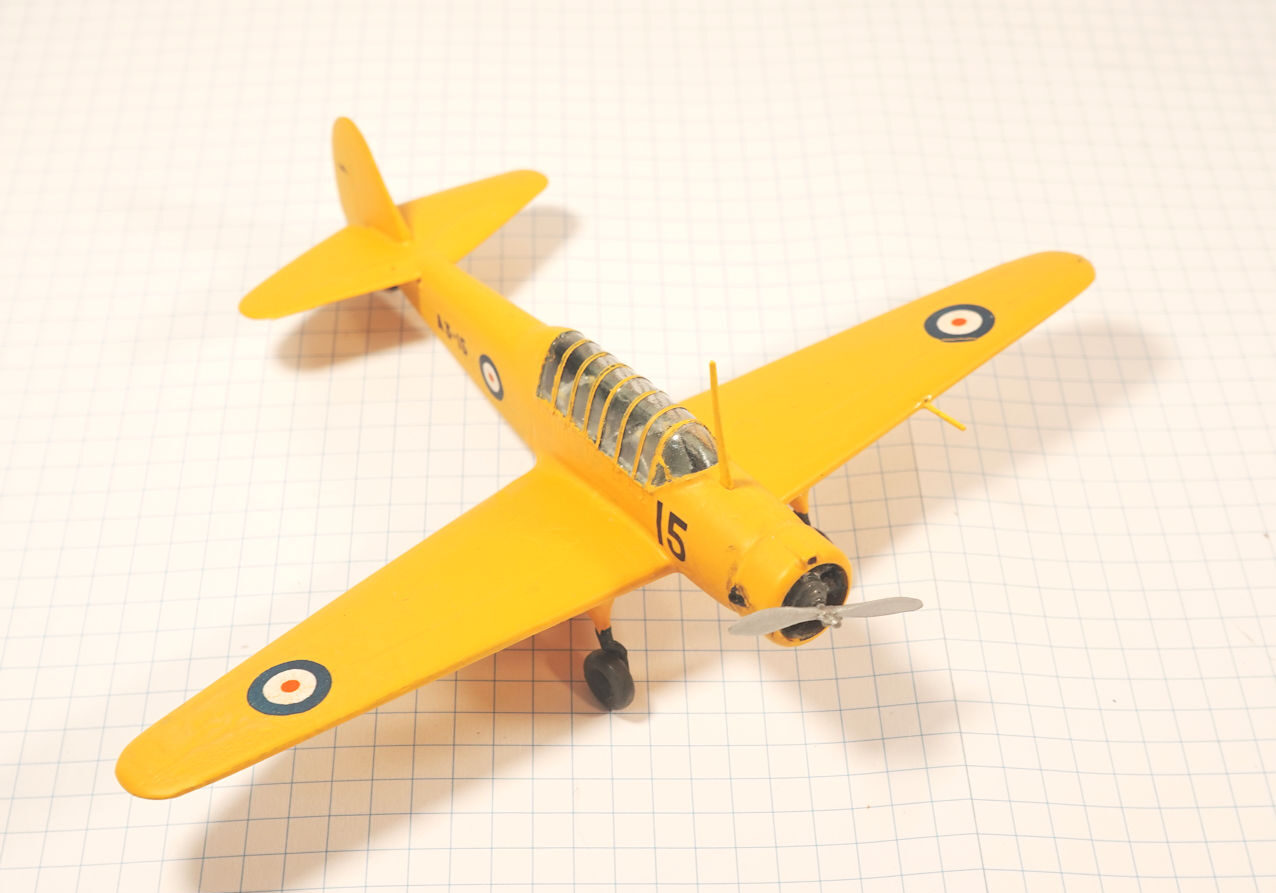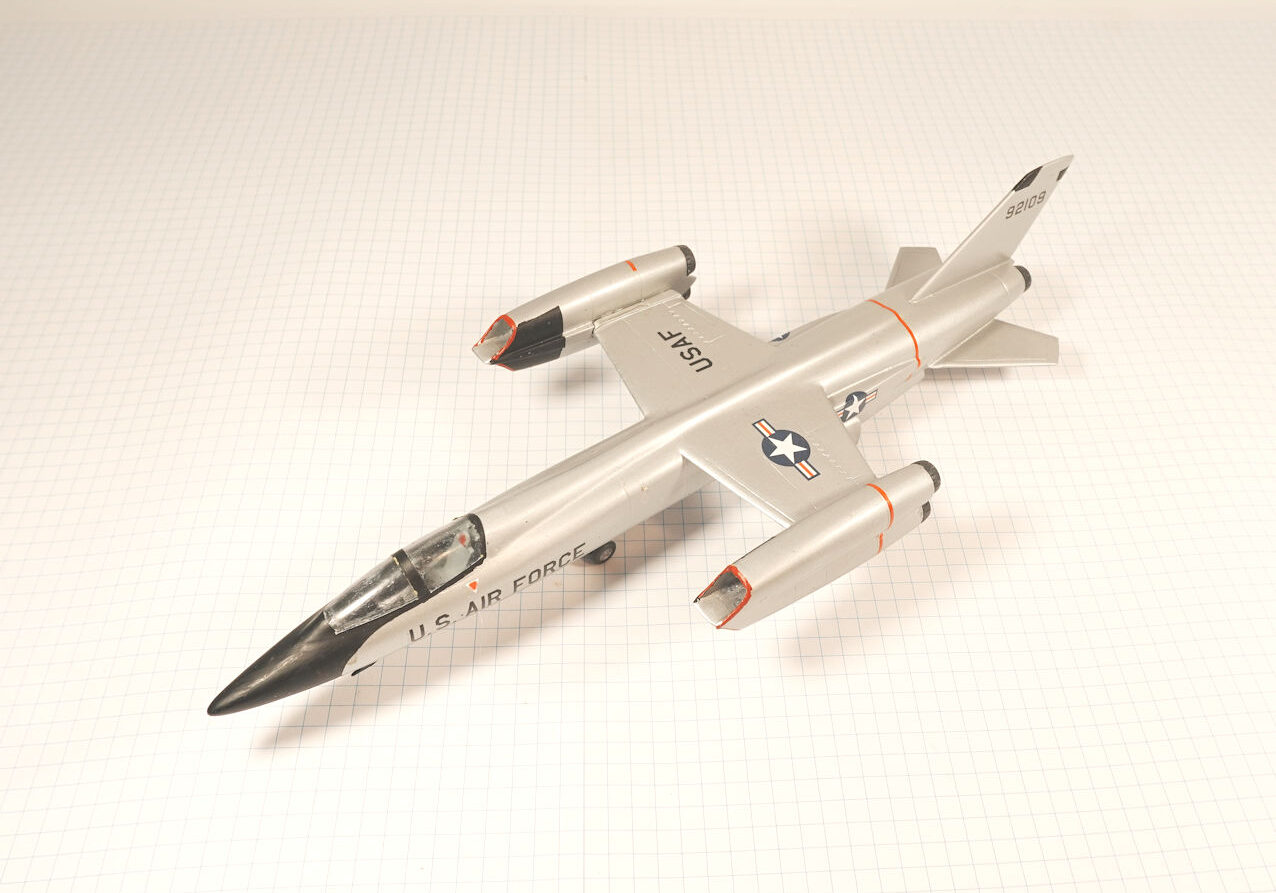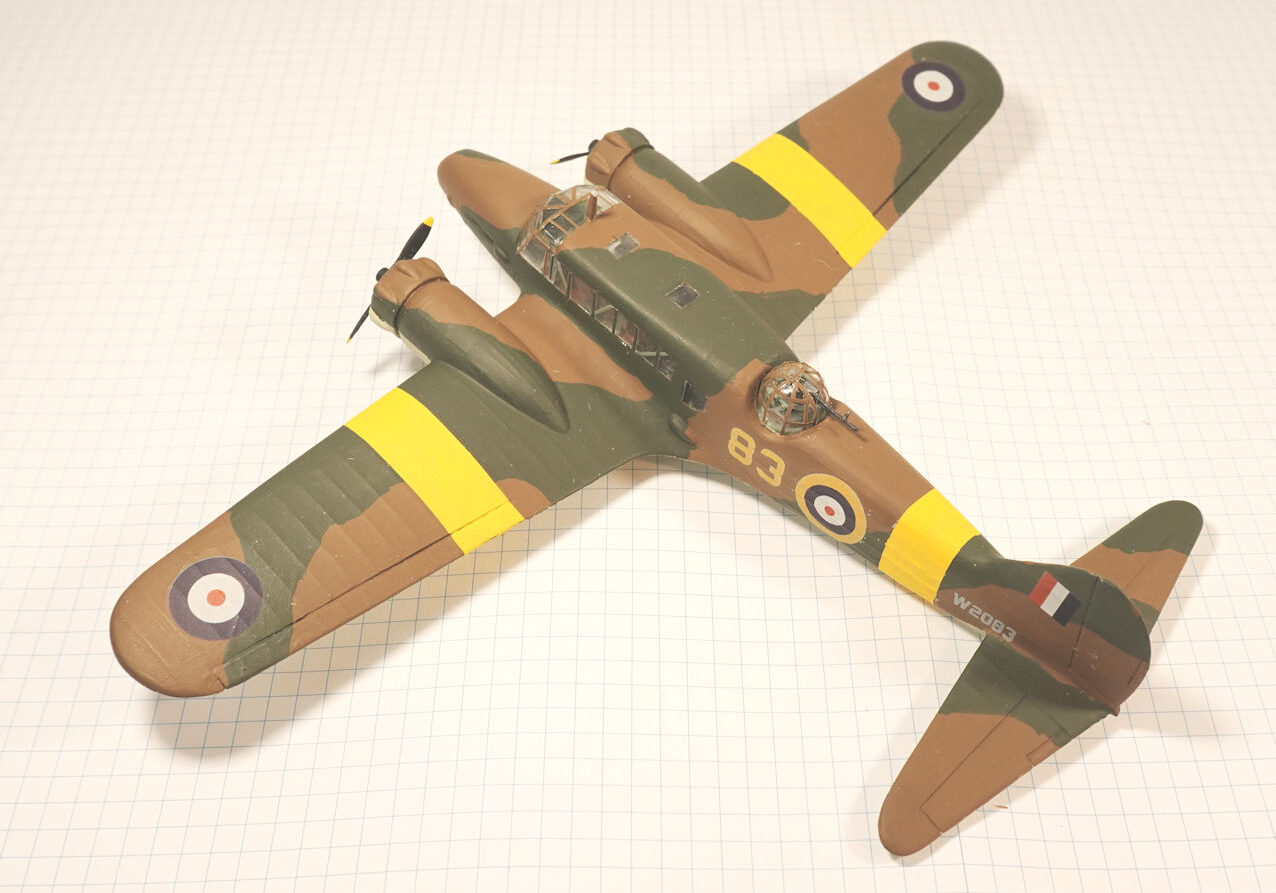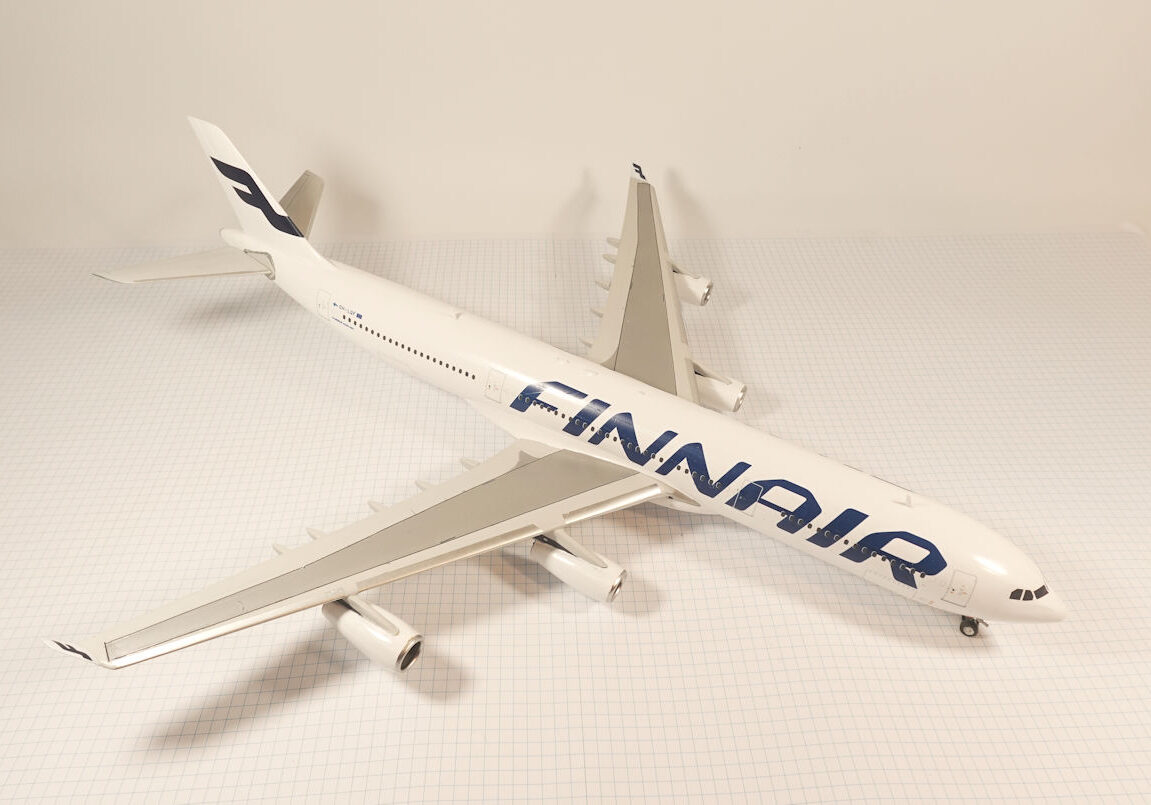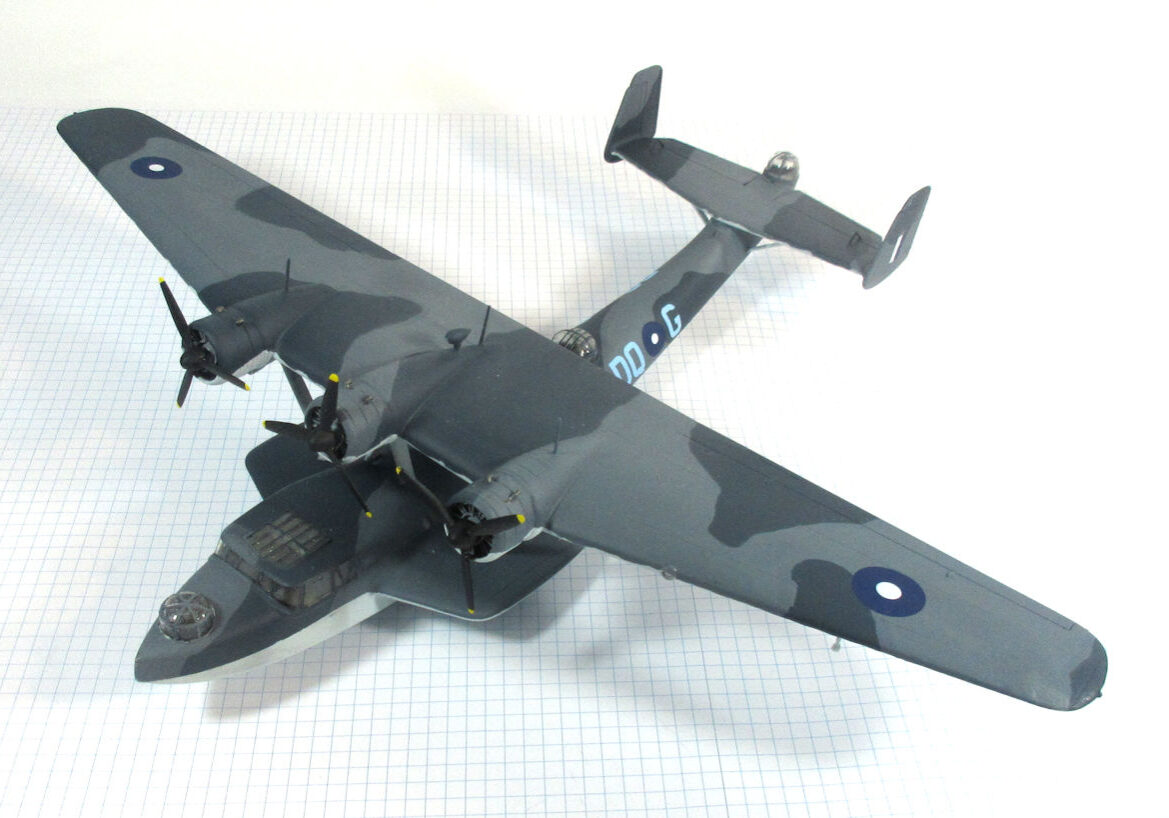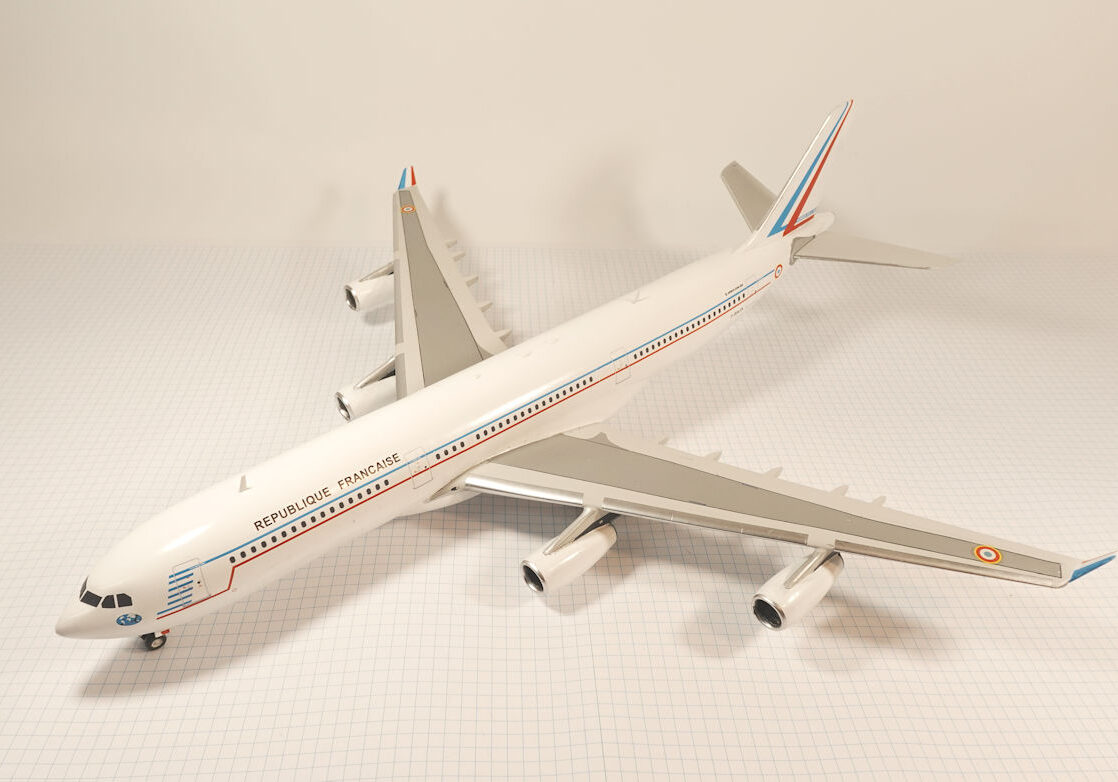History
The Hawker Siddeley Sea Vixen was a heavy all-weather interceptor flown by the Royal Navy from 1959 to 1972. Its long development period meant it was virtually obsolete by the time it entered service.
The Sea Vixen began as the deHavilland DH110 twin seat all-weather fighter.
Design started in 1946 and the prototype made its first flight on 25 September 1951.
After a fatal crash at an air show in 1952 it was extensively redesigned for use by the Royal Navy as an all-weather interceptor which made its first flight July 1954.
The first fully navalised version first flew on 2 July 1959 and the first Sea Vixen squadron was formed in July 1959.
The improved FAW.2 version first flew in 1962 and continued in service until 1972 when it was replaced by the McDonnell Phantom.
This model represents XP492 of 899 Naval Air Squadron, Royal Navy, flying from HMS Eagle in the 1970s.
Xtrakit 1:72 kit. Completed in June 2012.
